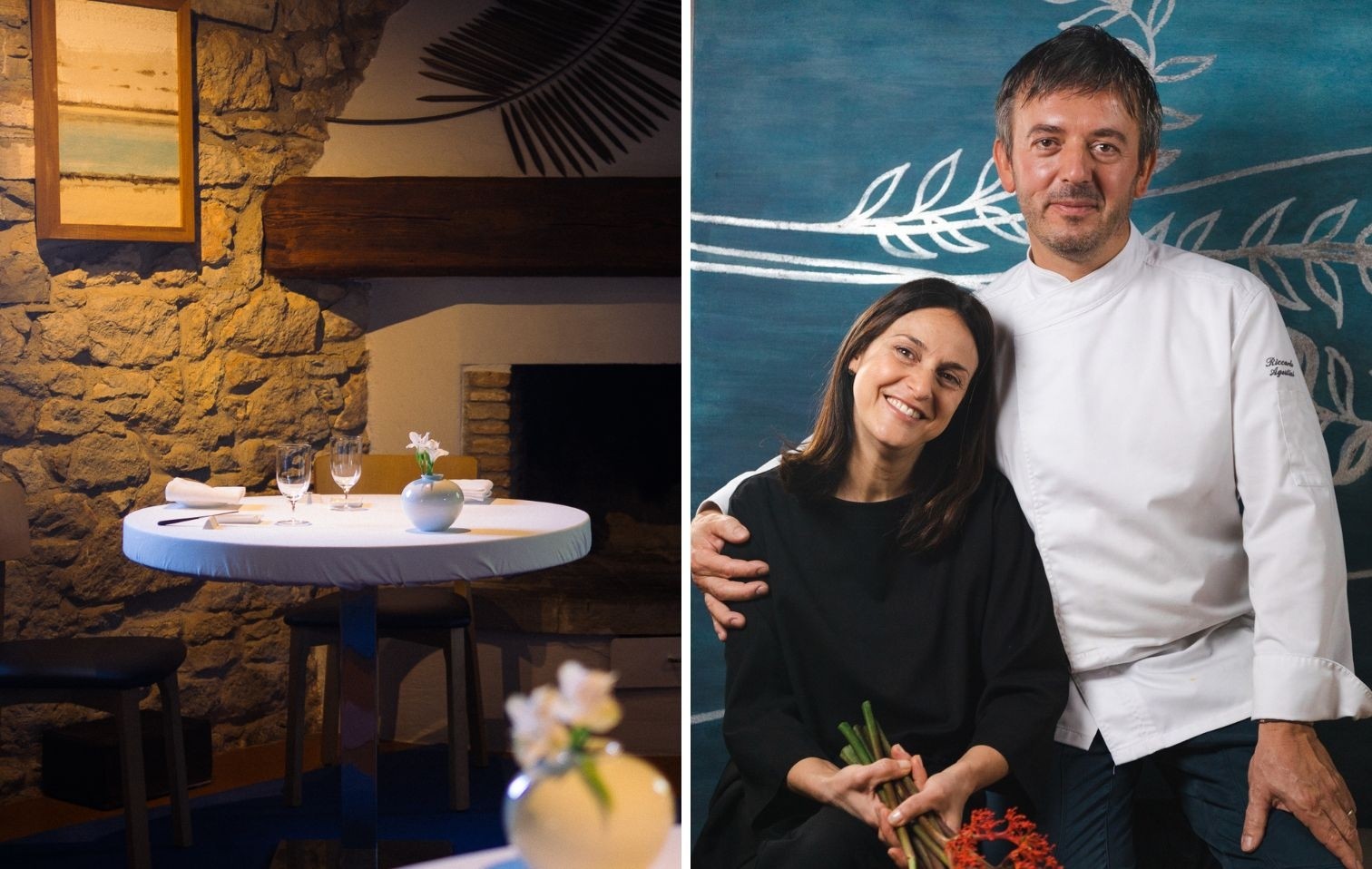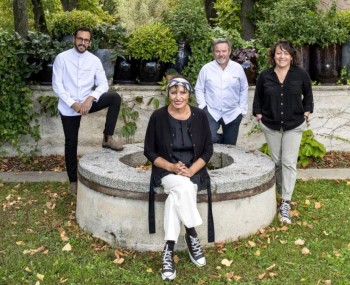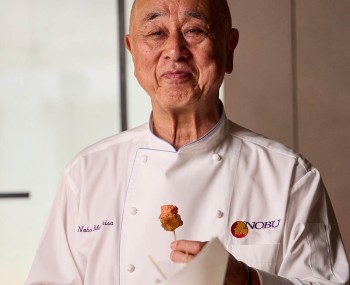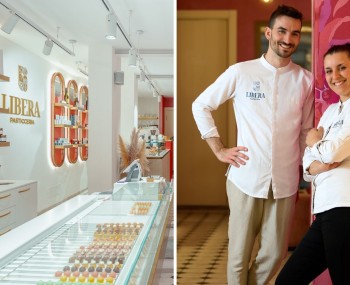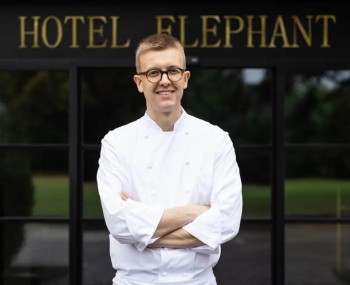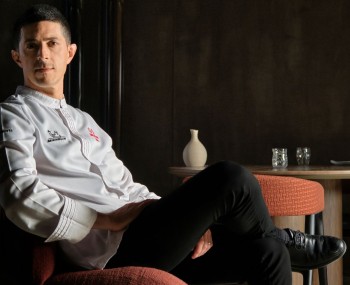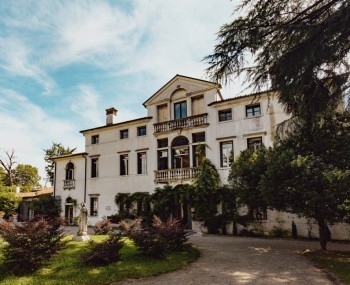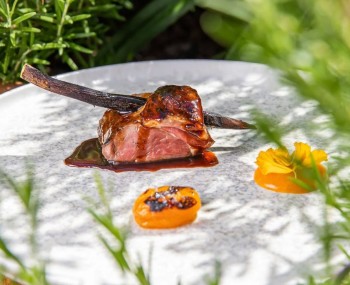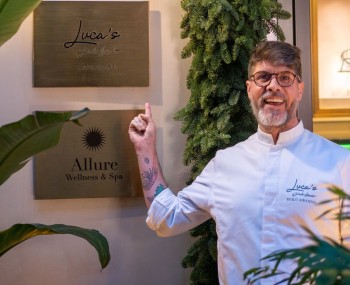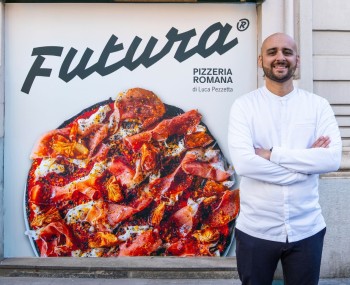How an old stone farmhouse in the Valmarecchia hills conquered gourmands, becoming a star-studded destination for sustainability: the story, cuisine, and future of il Piastrino.
Photo by Lorenzo Noccioli
The story and the restaurant
Attempting to tell the story of Piastrino without immersing it in its geographical context becomes an impossible task. It's not just the narrative of a restaurant but a piece of a place with indescribable magic, like Pennabilli. At six hundred meters atop Mount Carpegna, the enchanting hamlet of Borghetto boasts a magnetic allure that Tonino Guerra, writer, screenwriter, and friend of Federico Fellini, contributed to making unique with his poetic interventions.
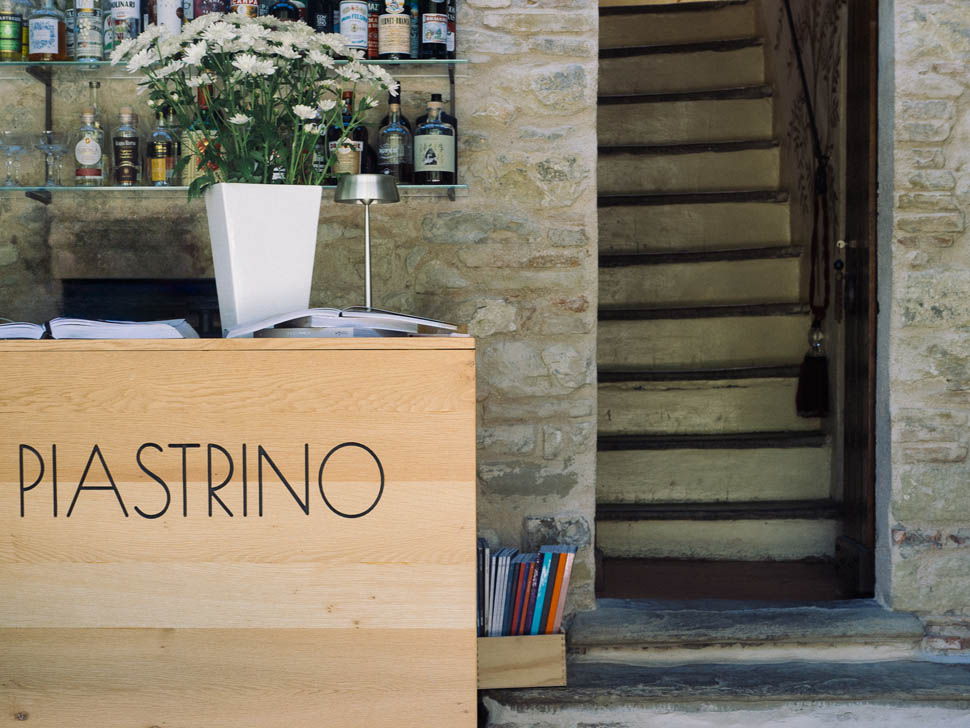
Like in a fairy tale canvas, one stumbles upon "Orto dei Frutti Dimenticati" (the Garden of Forgotten Fruits) along its narrow lanes, with trees whose names evoke enchanted atmospheres, biricoccolo, fico verdino, azzeruolo. Preserving the taste of fruits that once adorned the gardens of peasant houses, now completely disappeared. There's also the symbolic (Gelso della pace) Mulberry Tree of Peace, planted by the Dalai Lama during one of his two visits in the '90s, and the Sanctuary of Thoughts, with enigmatic stones, motionless, waiting to hear the words of visitors.
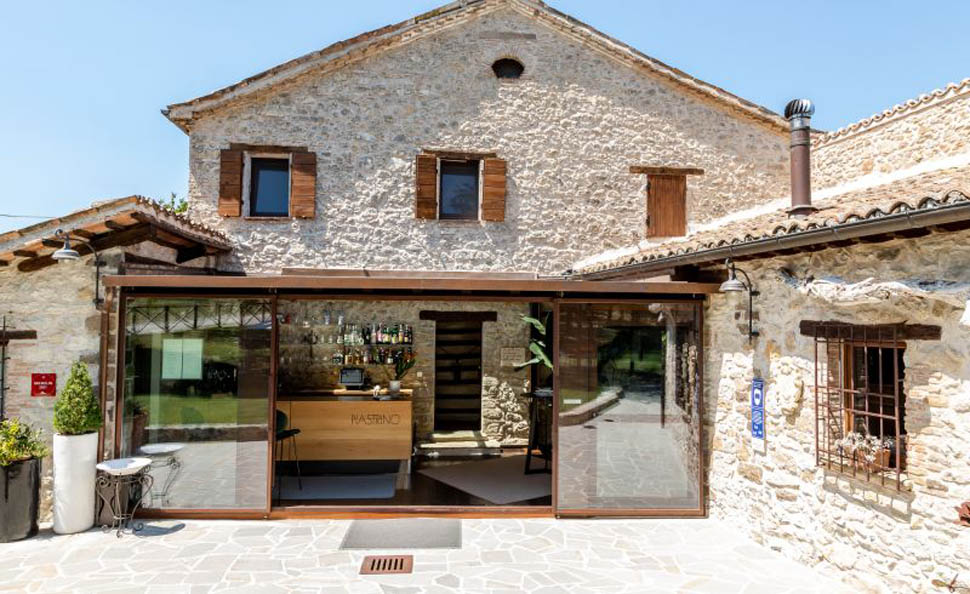
It's in this setting, suspended on the hills of Montefeltro, that about sixteen years ago, chef and owner Riccardo Agostini collaborated with the local tourist office to renovate an old stone farmhouse, already known as Piastrino, surrounded by the greenery of the Begni Park, turning it into a place of refreshment.
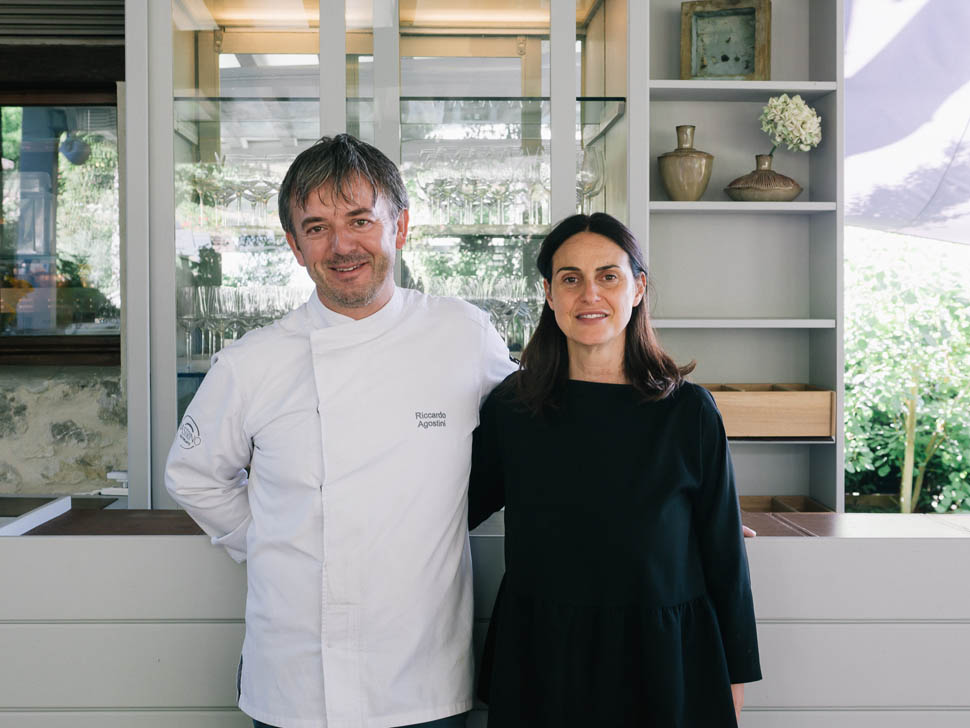
Riccardo, a thirty-something who started in Pesaro, immediately after hotel school, with the indispensable and extraordinarily formative summer experiences in the restaurants of the Adriatic Riviera. He then had his first encounter with fine dining at Righi in San Marino. There, he became aware of his inclination for this profession and decided to perfect it, for about a decade, alongside Gianfranco Vissani, a period that represented his most intense formative journey.
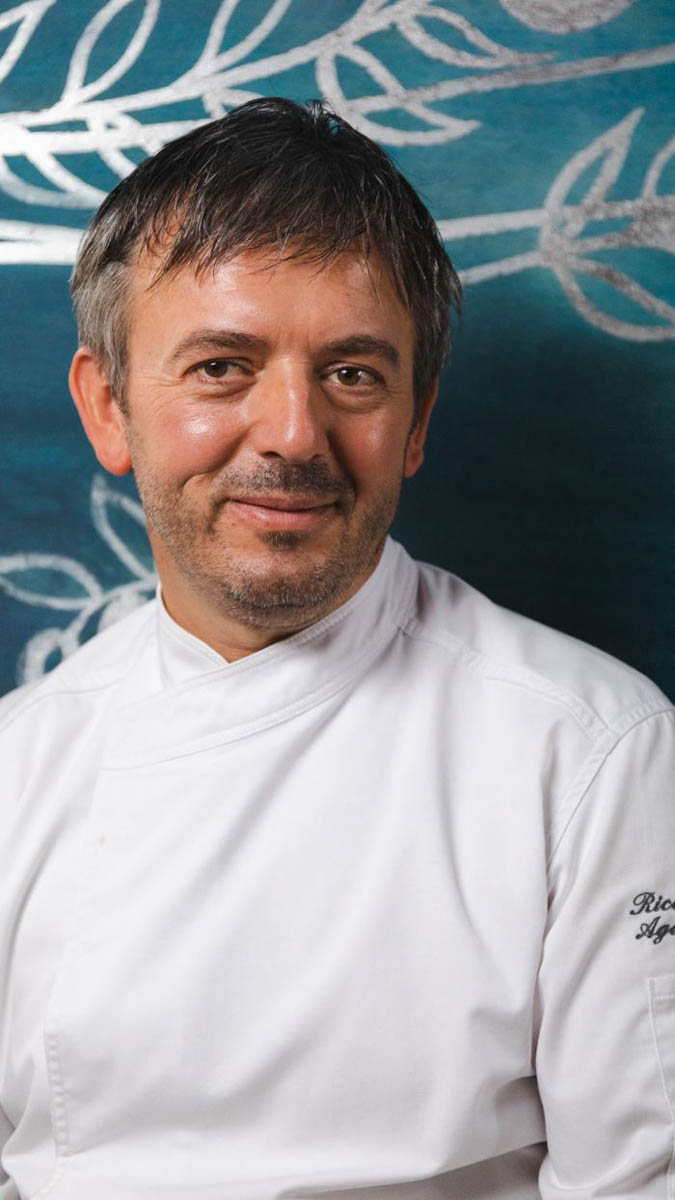
But it's challenging to stay away from Romagna forever, and as soon as the opportunity arises for a position at Osteria del Povero Diavolo in Torriana, above Rimini, Chef Agostini seizes it. After two years, the outlines of their own project take shape, to be set up with his wife Claudia Bucci, a sommelier, who combines solid expertise in the dining room with a guest-focused attention adorned with grace and refinement.
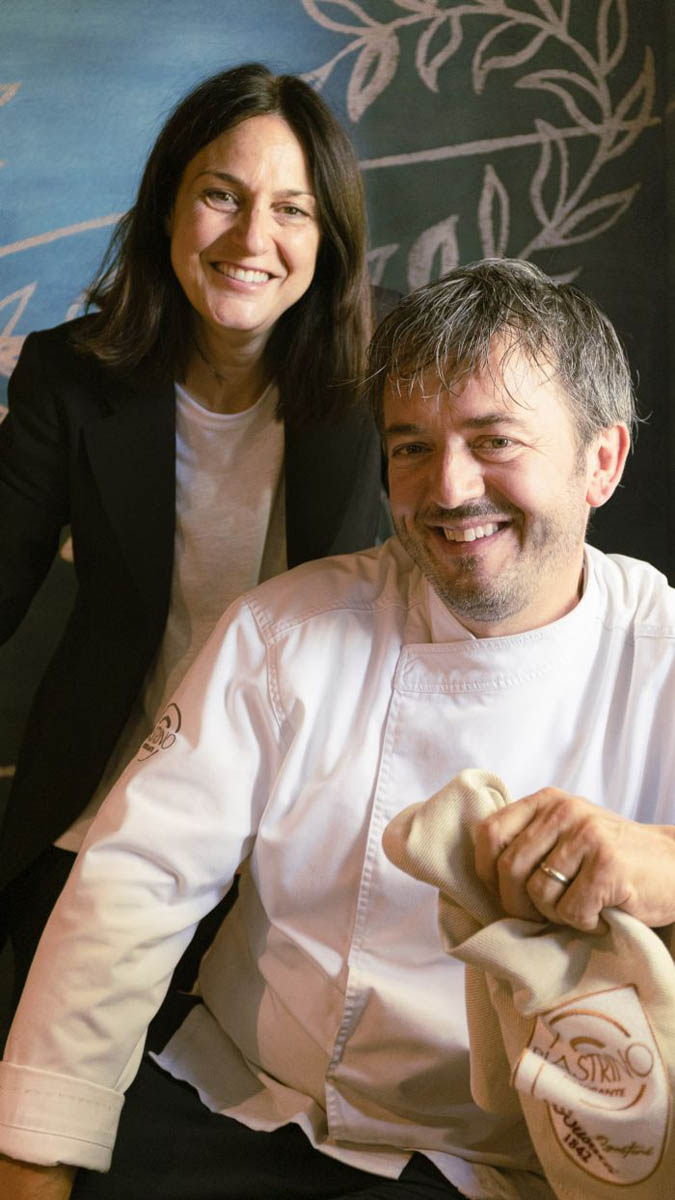
After a period dedicated to restoration work, Piastrino opens and immediately establishes itself as a new milestone in Romagna's restaurant scene, becoming increasingly unmissable over time. After a couple of years, in 2009, a gleaming red plaque adorned with the Michelin star shines on the exposed stones of the facade. Always confirmed, and starting this year, joined by the Green Star, recognizing sustainability and environmental respect, represented for Riccardo and Claudia by the close bond they have built over time with producers throughout Valmarecchia.
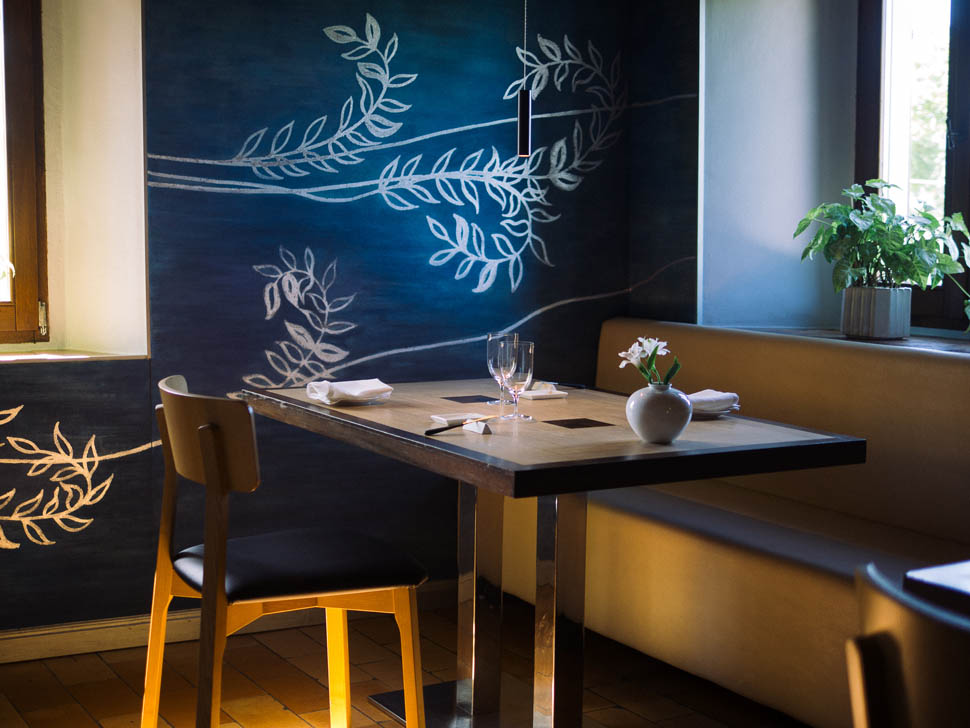
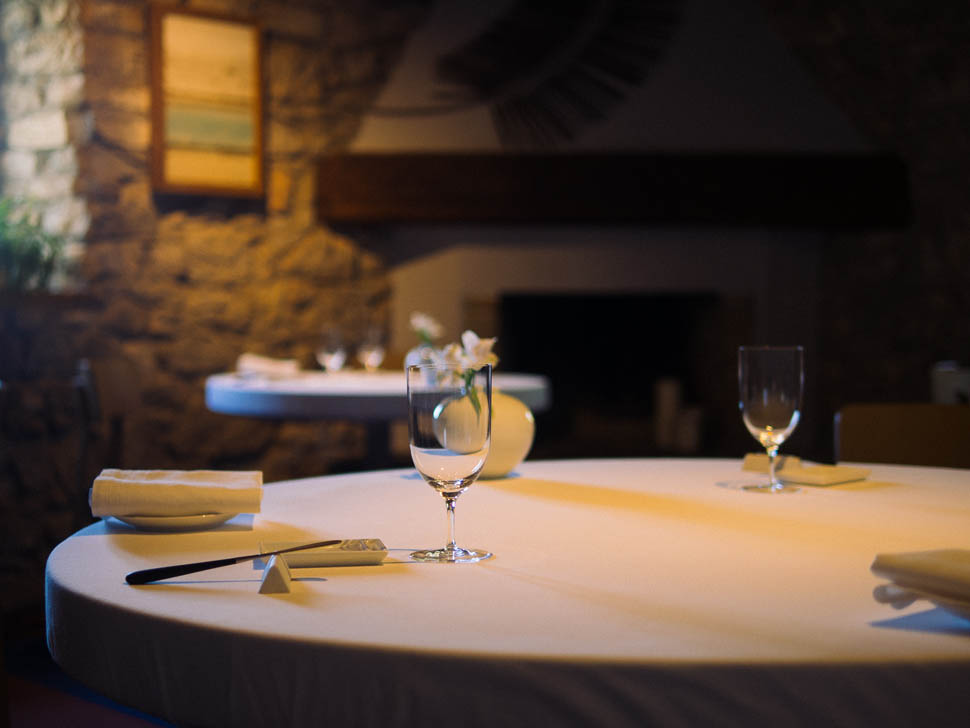
"In 2020," recounts Riccardo, "we all remember it for the pandemic lockdown, but for us, it was also a time of renovation, which we had already planned before the health emergency. With the forced closure, we were able to dedicate ourselves entirely to the renewal of our spaces."
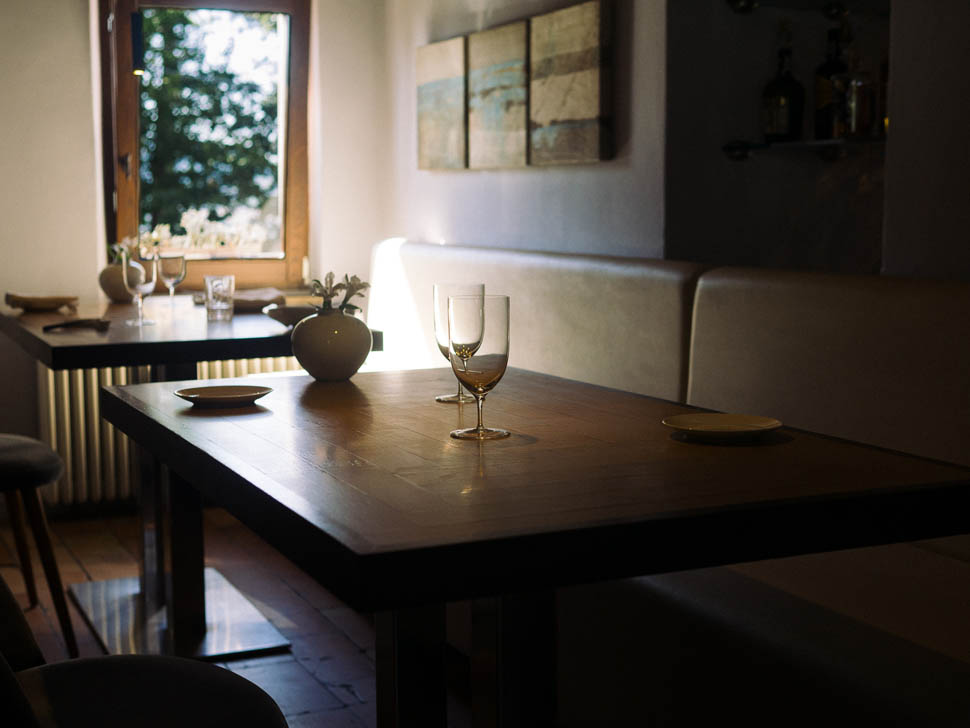
Like the spacious patio nestled against the hill with a beautiful view of the valley, where in the near future, some rooms will also be built for those who want to enjoy dinner and extend their stay in the village until the next morning. Because Piastrino is certainly a dining stop, but it is limiting to visit it merely for a meal; these are the places that are worth experiencing in continuity with the surrounding environment to derive the utmost satisfaction.
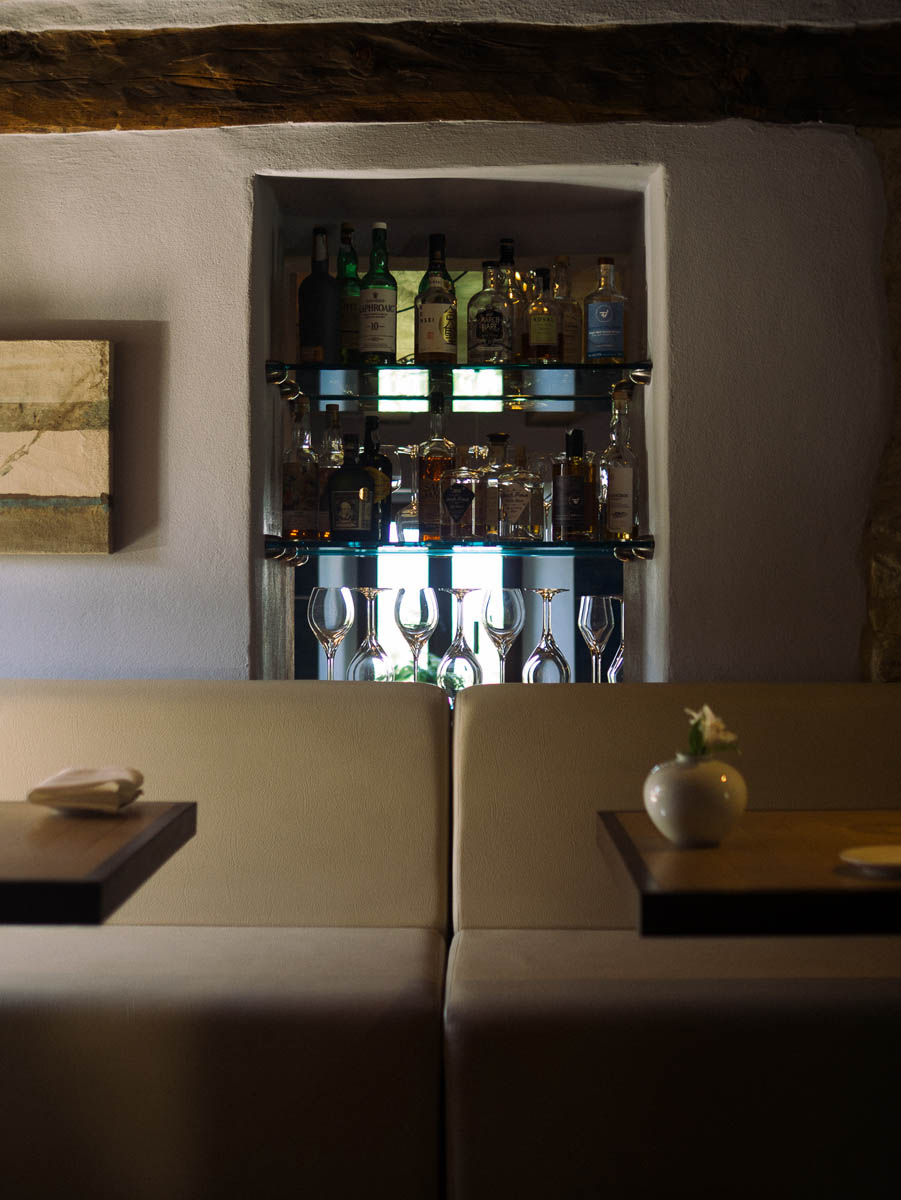
The dishes
The start of the menu is pure lightness with the Profumi e Aromi cocktail, where elderflower infusion and an ancestral method from the Famoso grape variety, a blend from Romagna, revived after years of neglect, with notes of flowers and ripe fruit. And L’Americano della Valmarecchia, with bitter and vermouth 721 from Baldo Baldinini, a liquor maker from Santarcangelo di Romagna, paccasassi marchigiani, Cuban oregano, vegetable part of citronella, sorrel, and a juniper essence spritz.
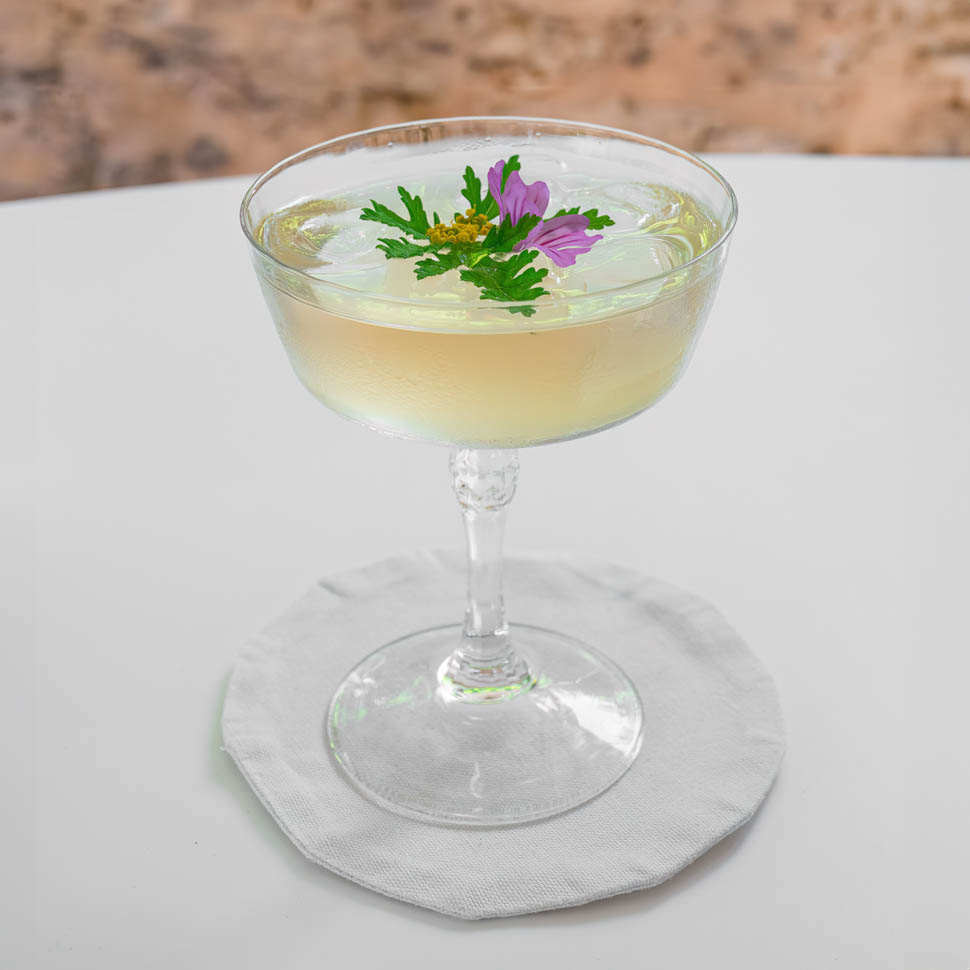
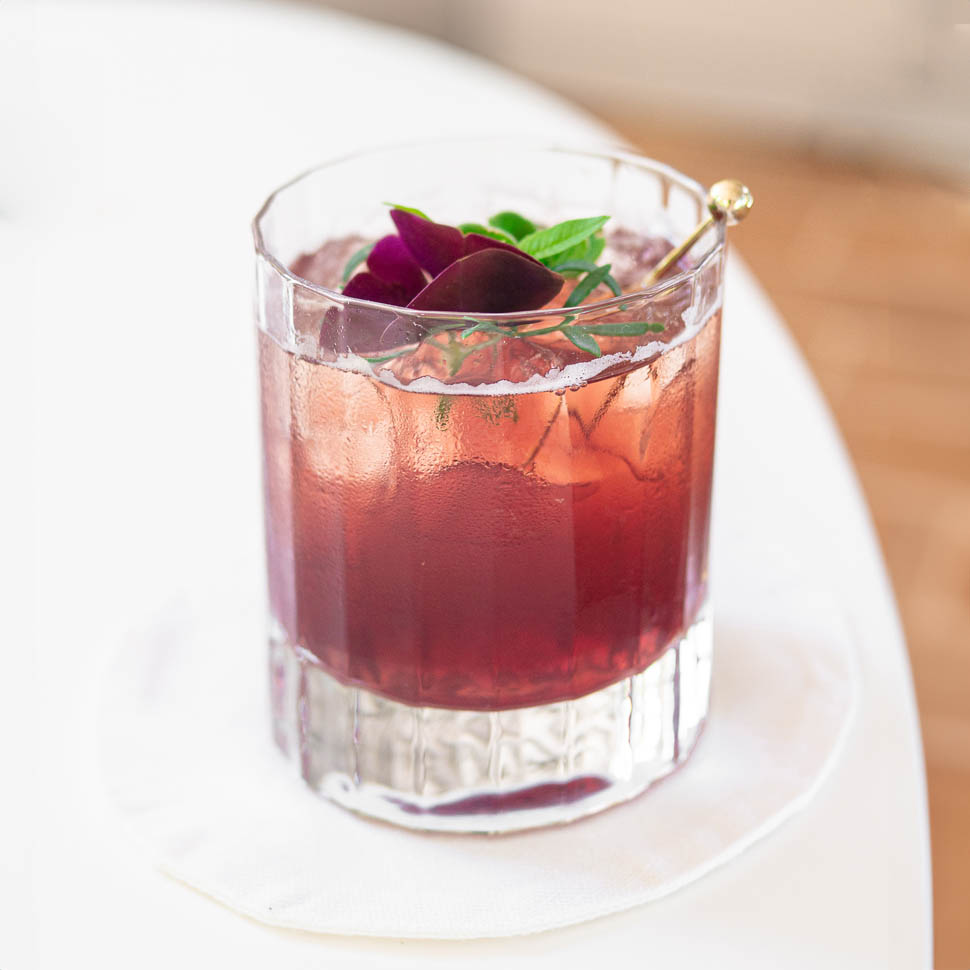
Already from the aperitif snacks, Chef Agostini's inclination to produce the unusual in its most immediate sense is evident, a clear and linear sense of originality that is easily comprehensible. A soft blend of peanuts, medlar, and yeast; tomato porridge; a potato waffle with anchovy, olive, and caviar.
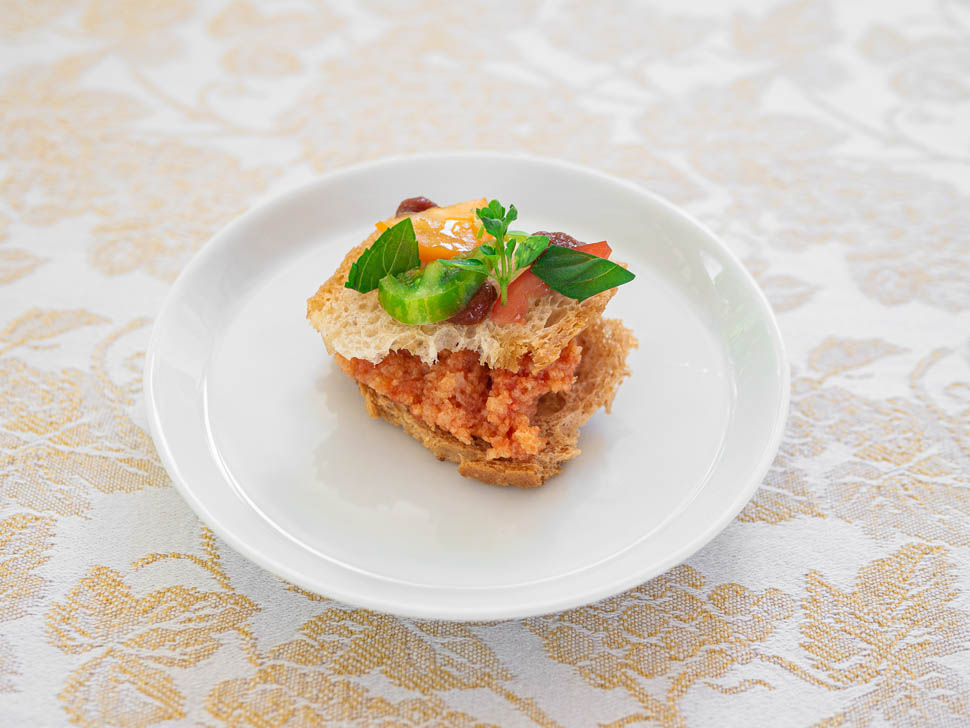
Multigrain bread sticks and bread made with ancient grains from Valmarecchia and sourdough are served with oil and, as an alternative to butter, with a creamy ricotta from the Cau & Spada farm in Sassocorvaro, in the Pesaro hinterland. Two malt wafers hold a liver pâté, resembling a mini sandwich.
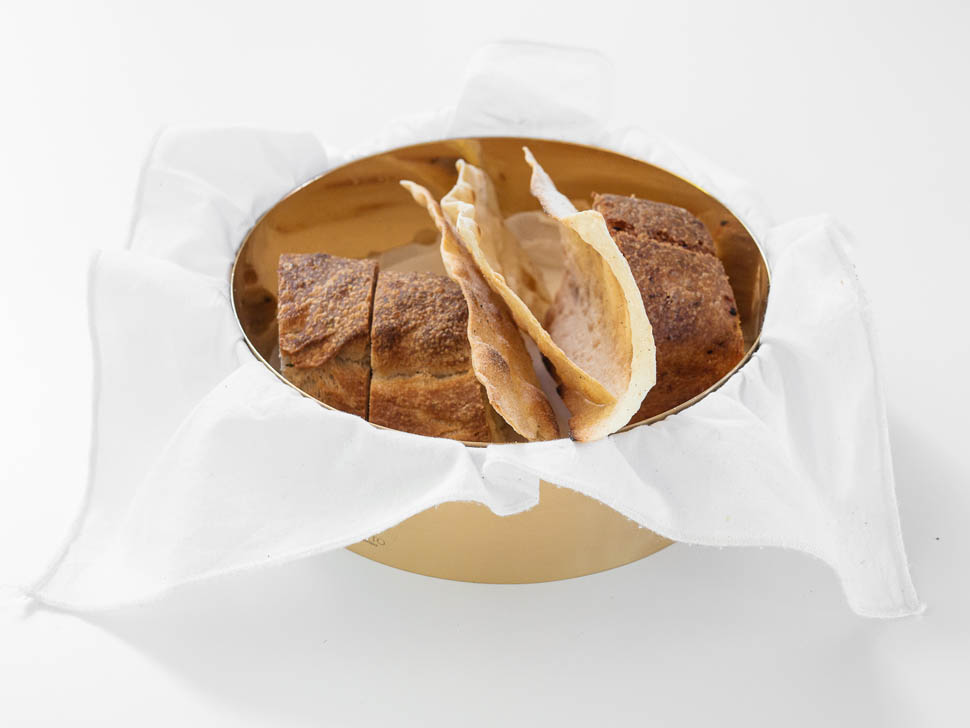
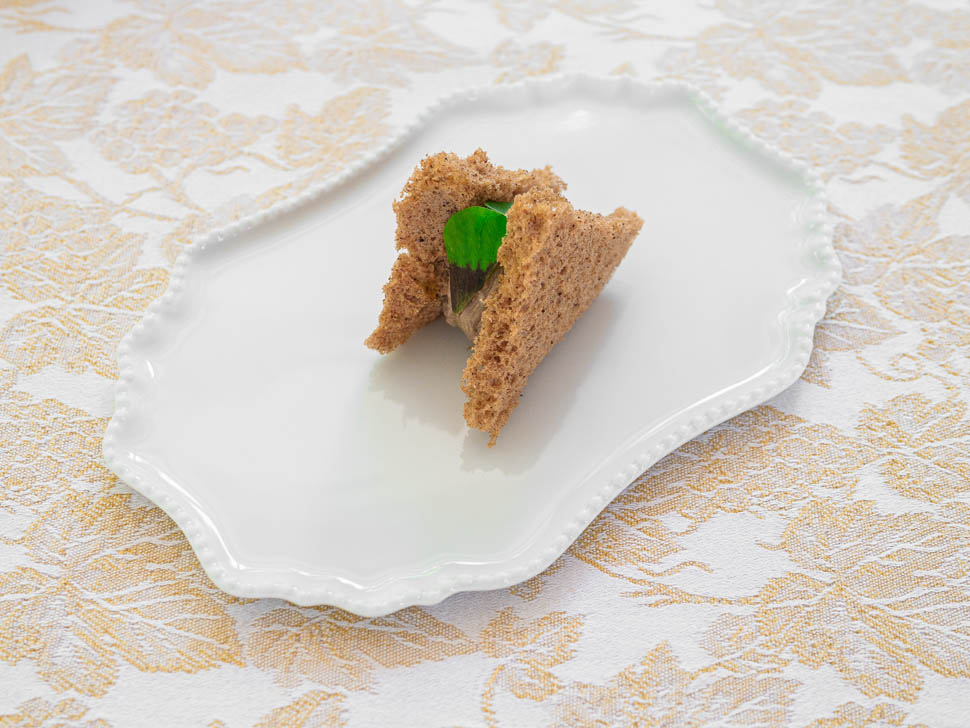
A series of predominantly vegetable-based dishes celebrate the herbs and flowers gathered from the garden and the surrounding greenery. A zucchini flower and its seeds; a tartlet with mimosa and sour herbs; a cantarello, a variation of piadina in a soft version, the dough stuffed with ewe's stracchino, always from Cau & Spada, covered with herbs and flowers.
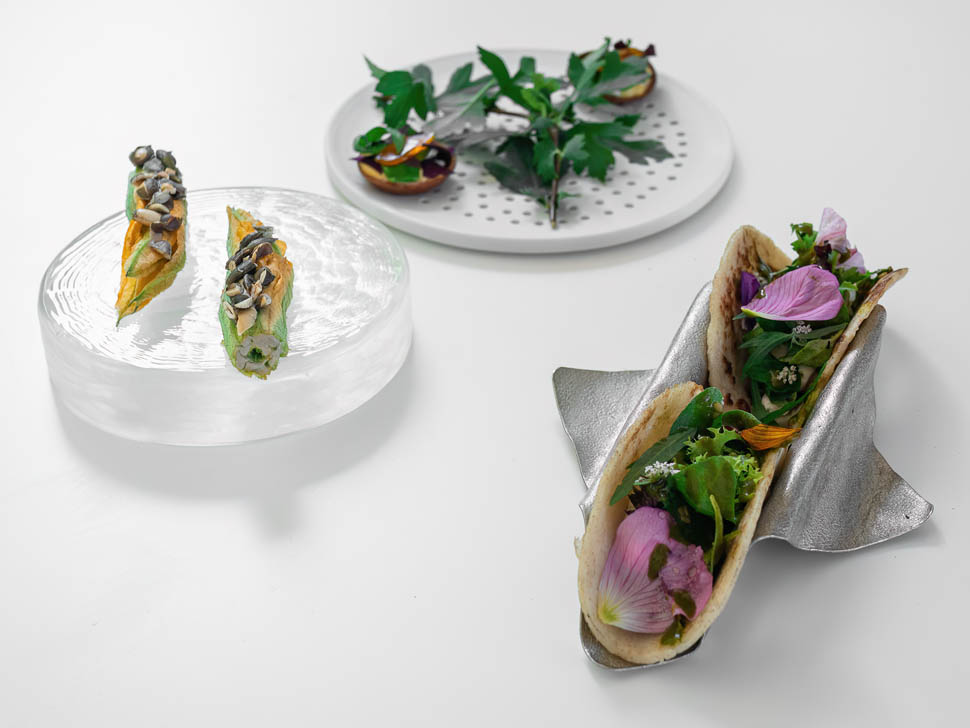
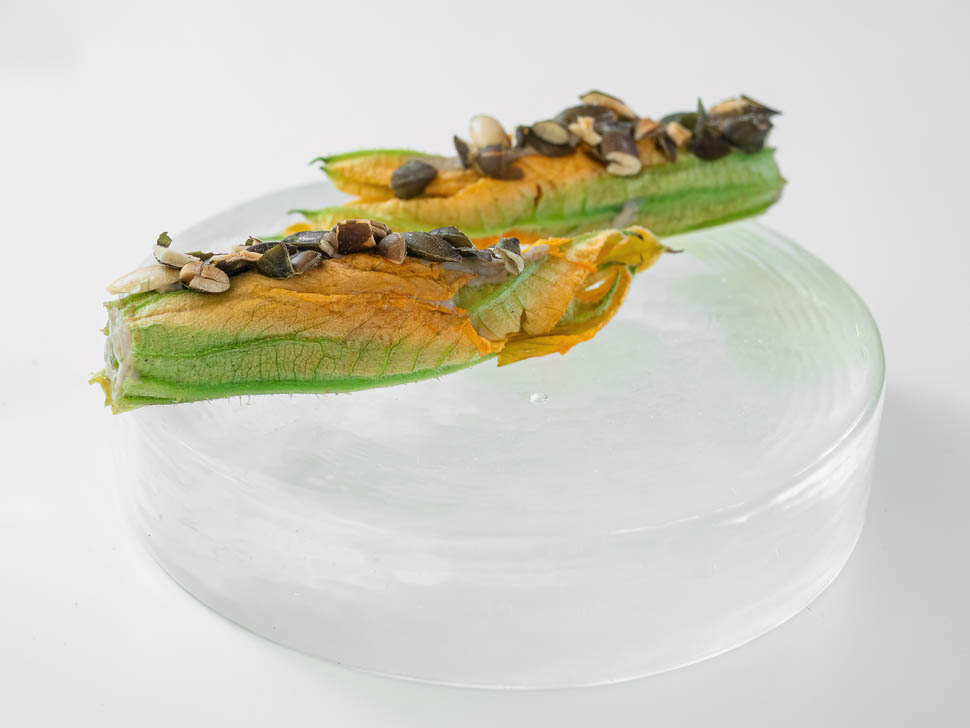
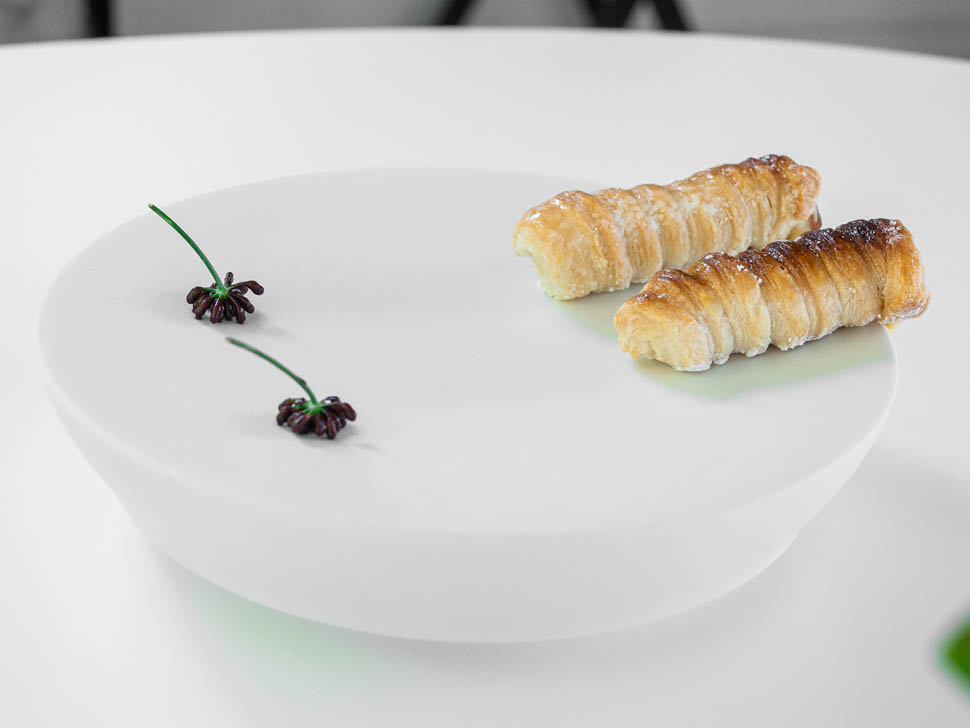
Even in the sourdough bread, the scents of the forest are transferred, as in the focaccia kneaded with juniper and cypress-flavored water, that shares the basket with a potato, cheese, and ciccioli bread and a piadina with oil. To enhance the indulgence of the creamy egg, there's the crunchy earthiness of celeriac, alongside the essence of summer truffle and the herring for a savory and marine touch.
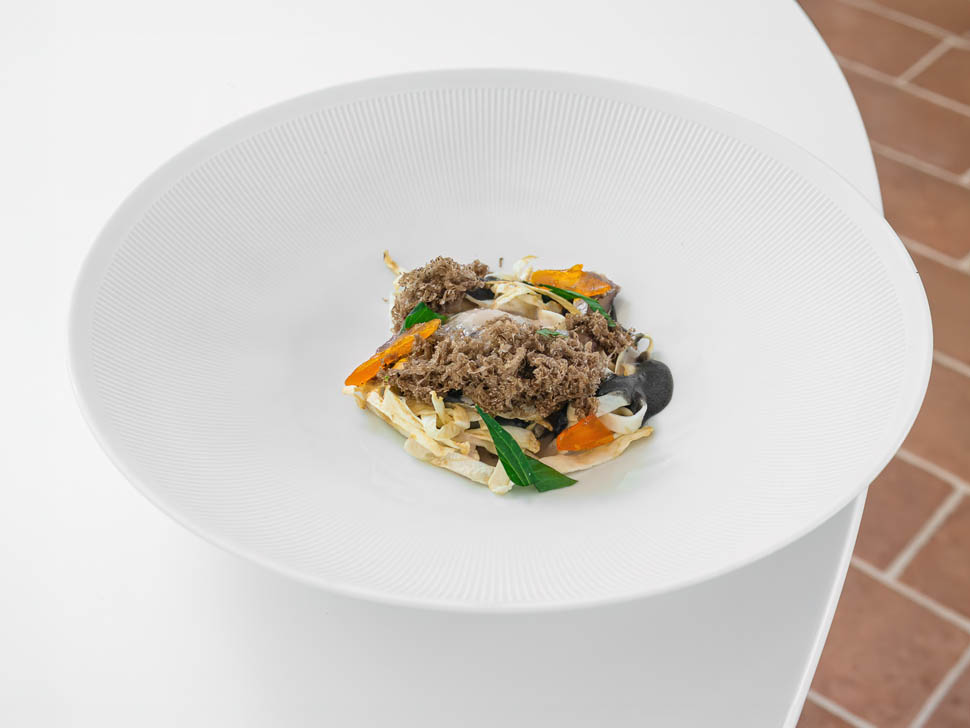
Smoked grilled lettuce, almost liquefying in its chlorophyll, merging with the tangy buttermilk, infused with the salty essence of iodized caviar.
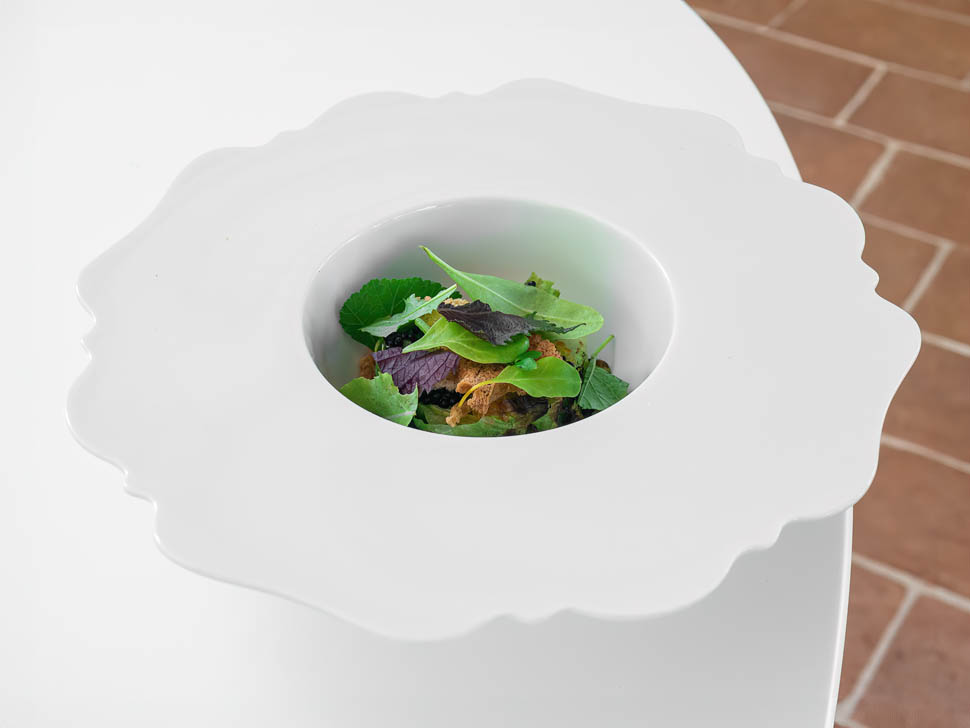
Immersed in a bold-flavored tomato distillate, the raw and cooked versions of a beef carpaccio immediately evoke memories of slices à la pizzaiola.
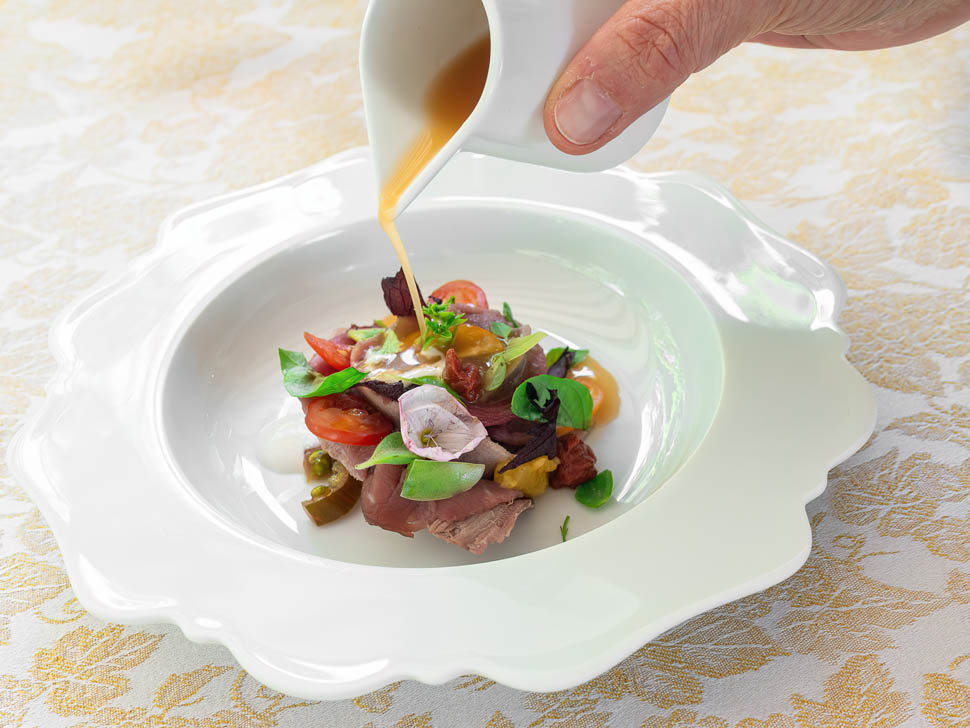
From the neighboring Casentino, trout arrives enveloped in lemon aroma, accompanied by zucchini and their flowers straight from the garden. Served separately, a crispy chip made from the skin of the salmon with burnt lemon.
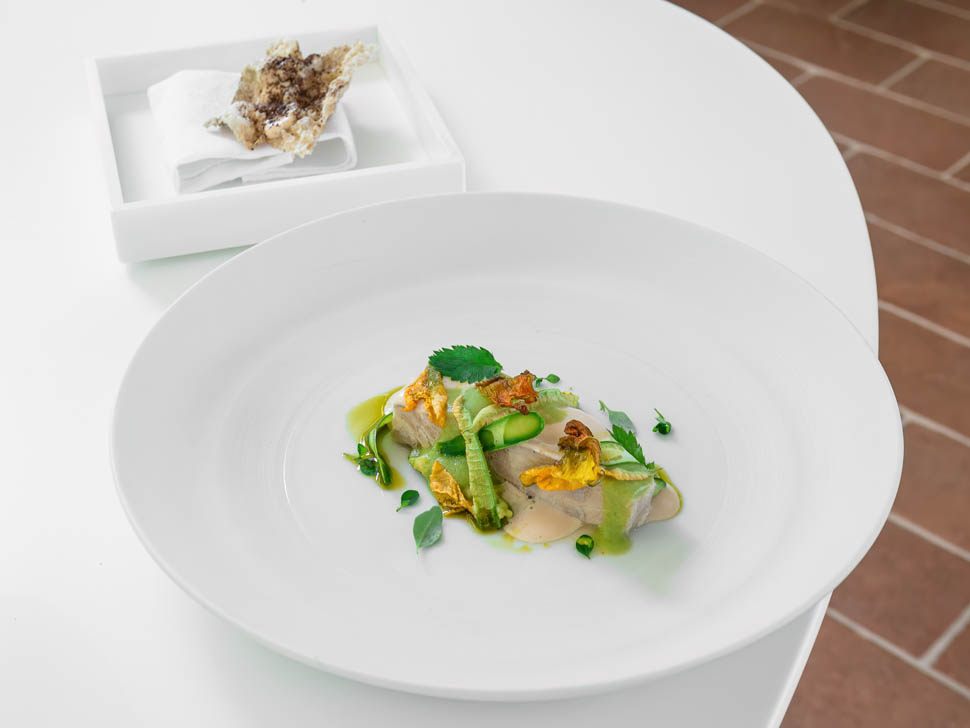
The scent takes an almost exotic turn with Carnaroli rice infused with fig leaf extract, carrying fragrances of fig latex and coconut, returning to tradition when paired with Carpegna ham – aromatic and delicate sweetness, complemented by the meaty twist and delicate sweetness of sturgeon cubes.
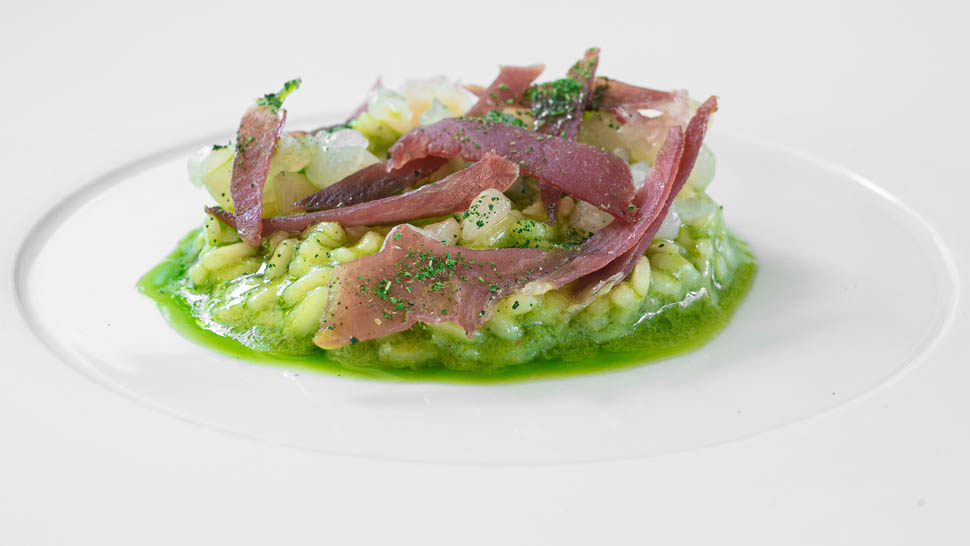
Handmade tagliolini is dressed with marinated rabbit, enhanced by a rabbit concentrate, with smoked egg yolk binding it all together and dusting of rosemary powder and flowers infusing a balsamic-bitter touch.
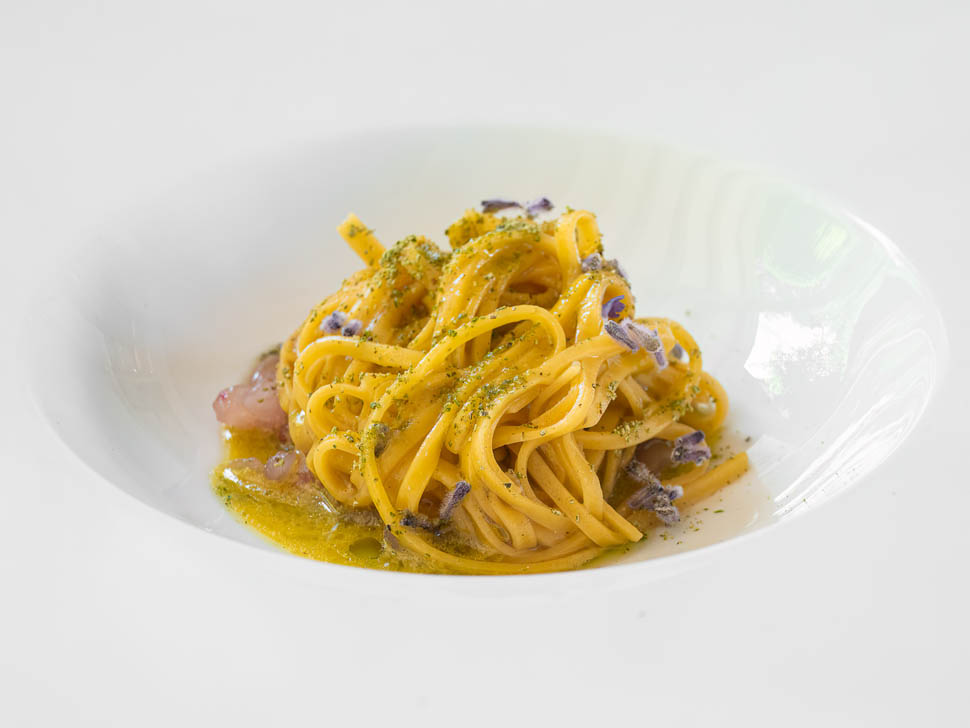
A comforting, homely pasta format of high appeal, yet translated into the codes of fine cuisine by few like Chef Agostini, is the cannelloni, filled with sweet onion, marrow, and Pennabilli saffron. The skill lies in understanding how the inherent characteristics of certain vegetables, preserved in their natural state, can elevate charcoal-cooked eel, with dried apricots, sour cherries, and garden beefsteak tomatoes. This is the essence of a dish that immediately delights.
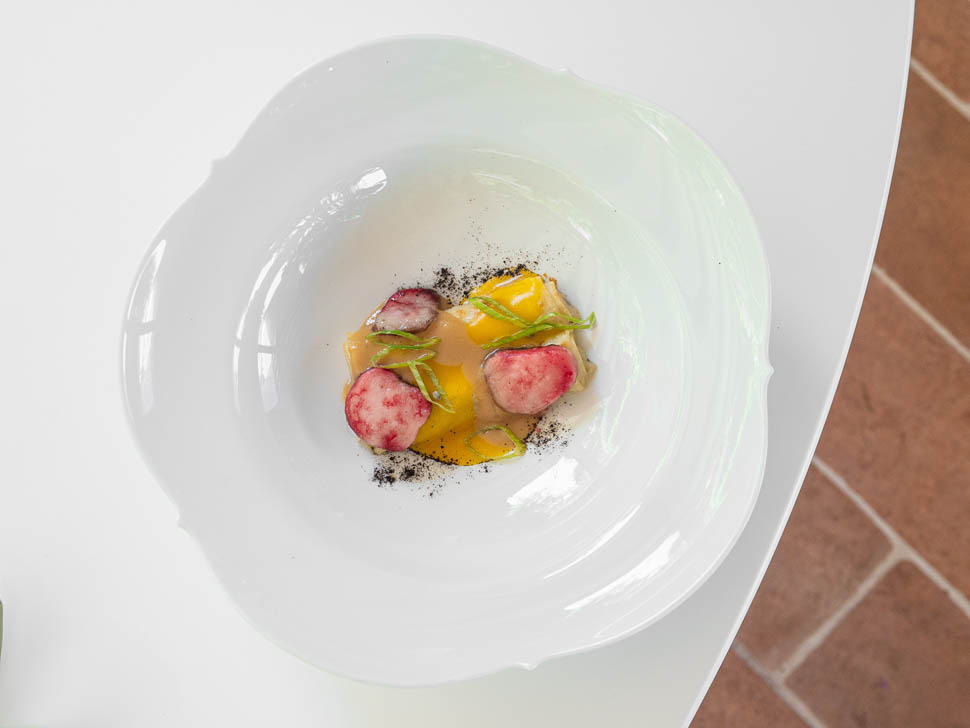
The lamb sweetbread is soothing and intensily milky, accompanied by plums and a yeast cream imparting distinct notes of mild acidity and black walnuts.
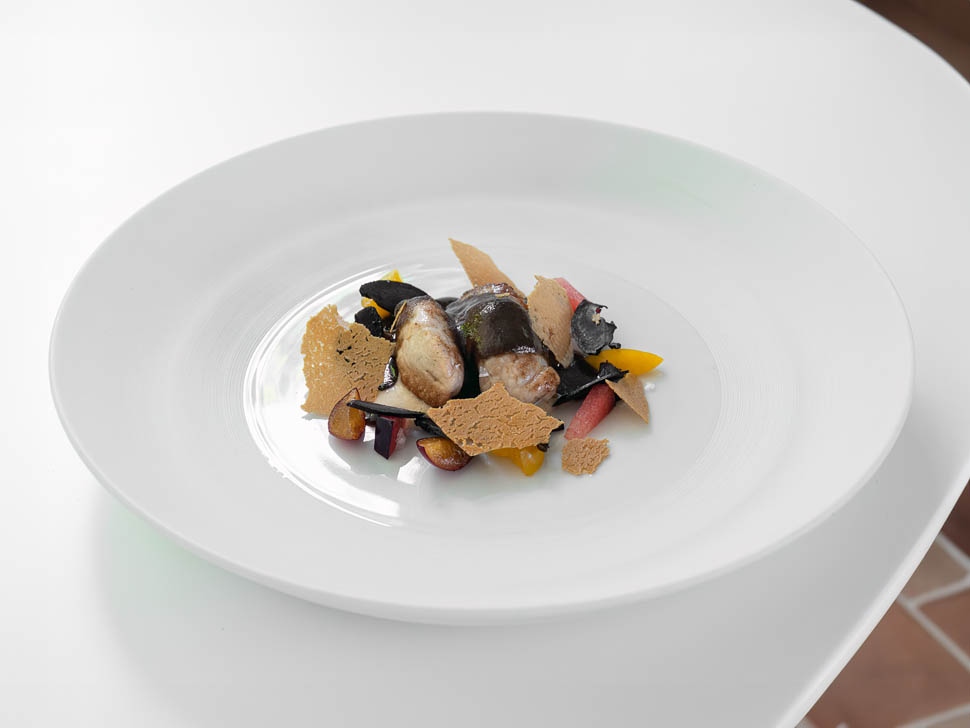
The pigeon is enhanced in all its parts with three different preparations and cooking methods. The breast is charcoal-cooked, served with porcini mushrooms, grapes, and star anise; the thigh is cooked separately, while the liver and offal become the filling for a crispy crostini.
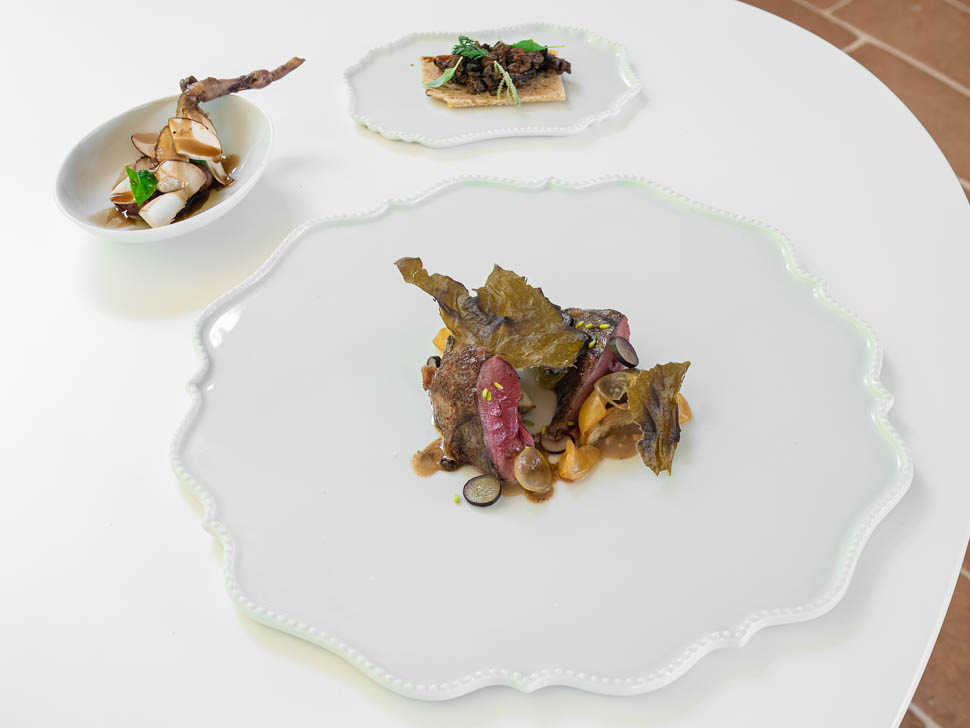
The valley pork shoulder, a particularly succulent cut with a delicate flavor, is contrasted in its sweetness by the bitterness of chicory, immediately balanced by sweet and slightly pungent garlic.
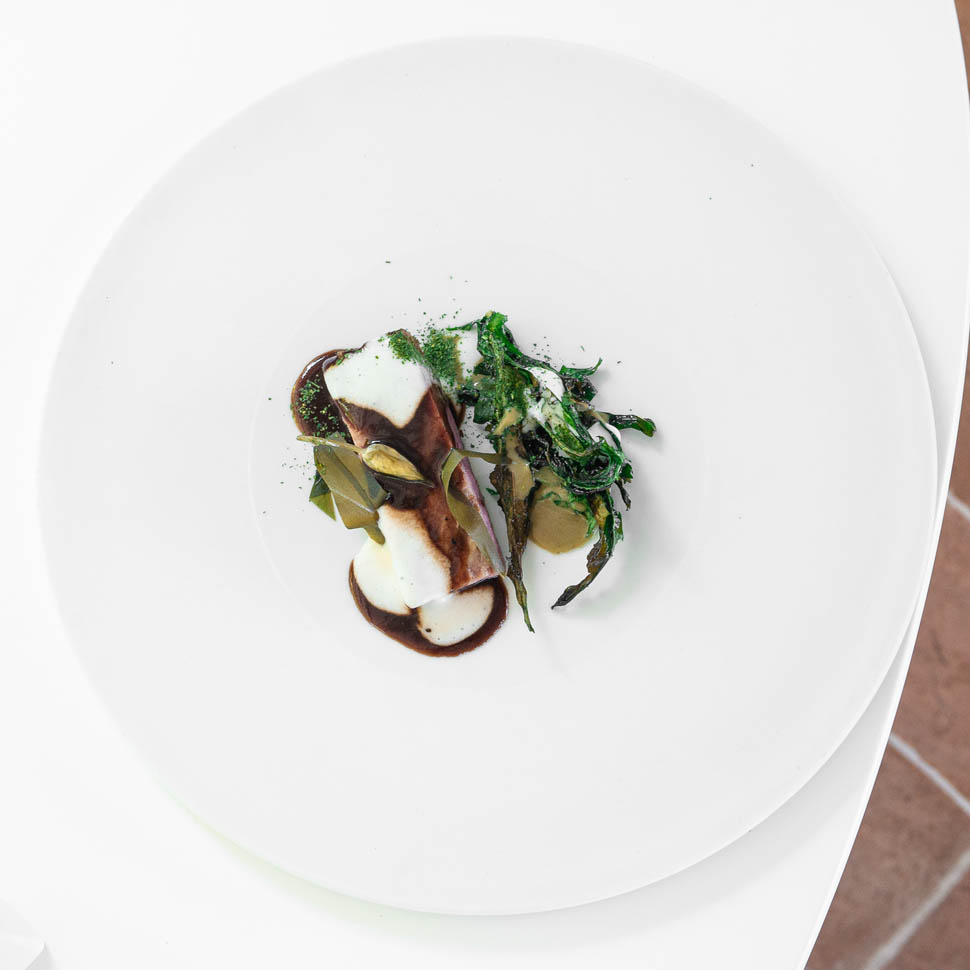
It is always refreshing to find the cheese cart at the end of the savory courses in a fine restaurant, especially when there is an implicit selection of local dairy products, as is the case with Il Piastrino. We have chosen a goat's raviggiolo, a ewe's robiola, and monteverde goat cheese.
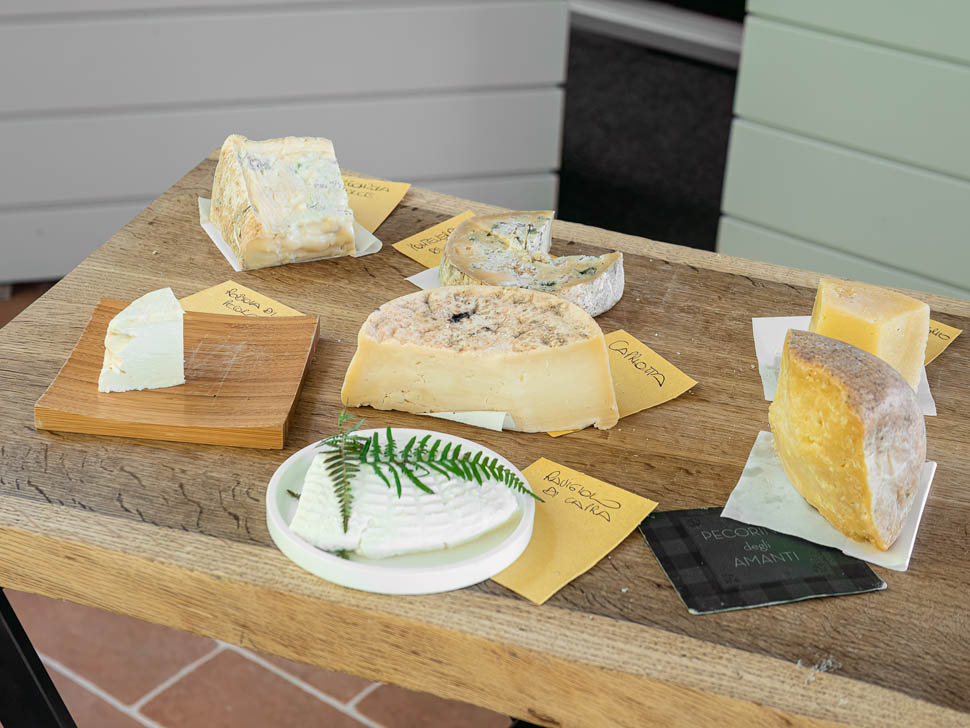
Desserts also show a deep attachment to the surrounding nature, such as fruit and vegetable minestrone with elderflower and ginger; or yogurt, honey, peach, and sage.
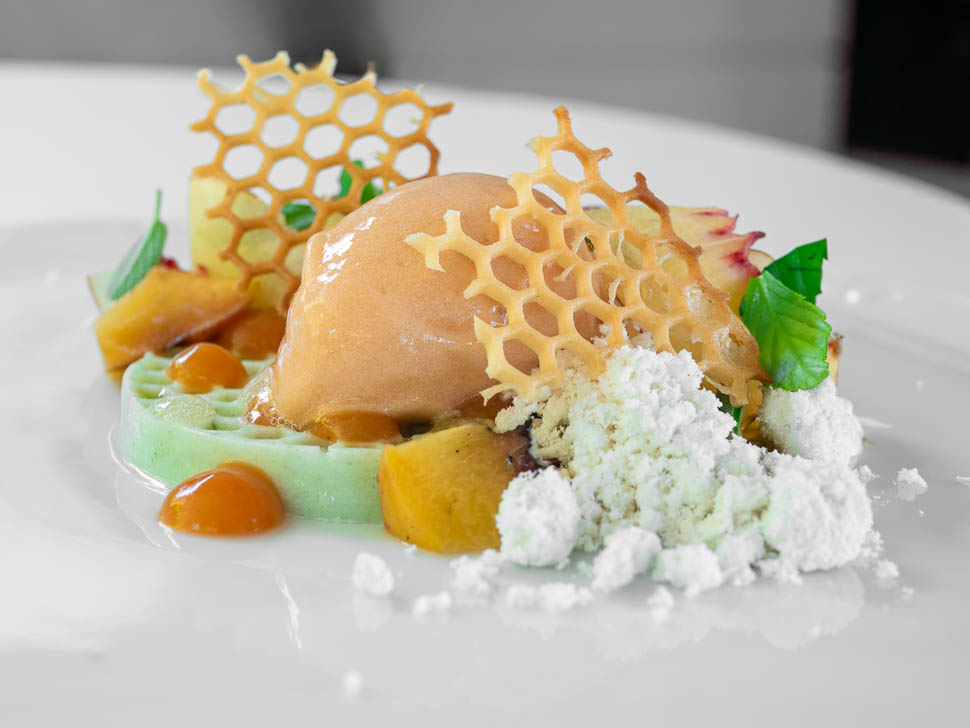
But the most representative is inspired by a stroll in the herbal garden next to the restaurant, featuring a variety of crystallized aromatic herb leaves covering a Chartreuse granita and almond cream.
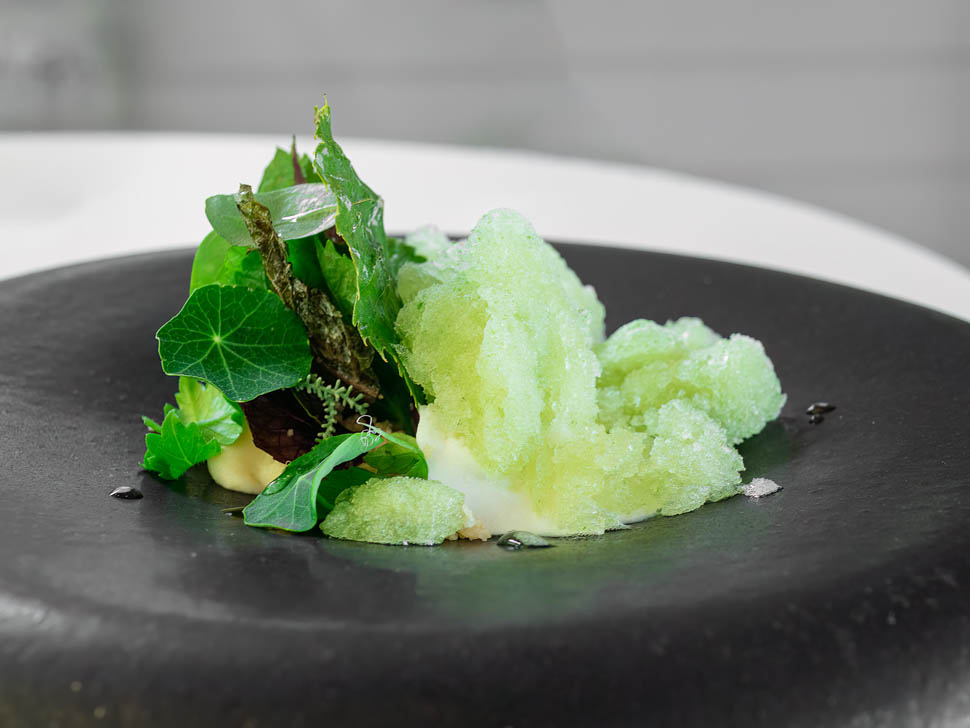
In the petit four selection, chicory macarons; white chocolate and passion fruit; cannoli with Marsala chantilly, and finally, a surprising flavor enclosed in one of the delicate forms that only nature can provide – a fennel flower dipped in chocolate.
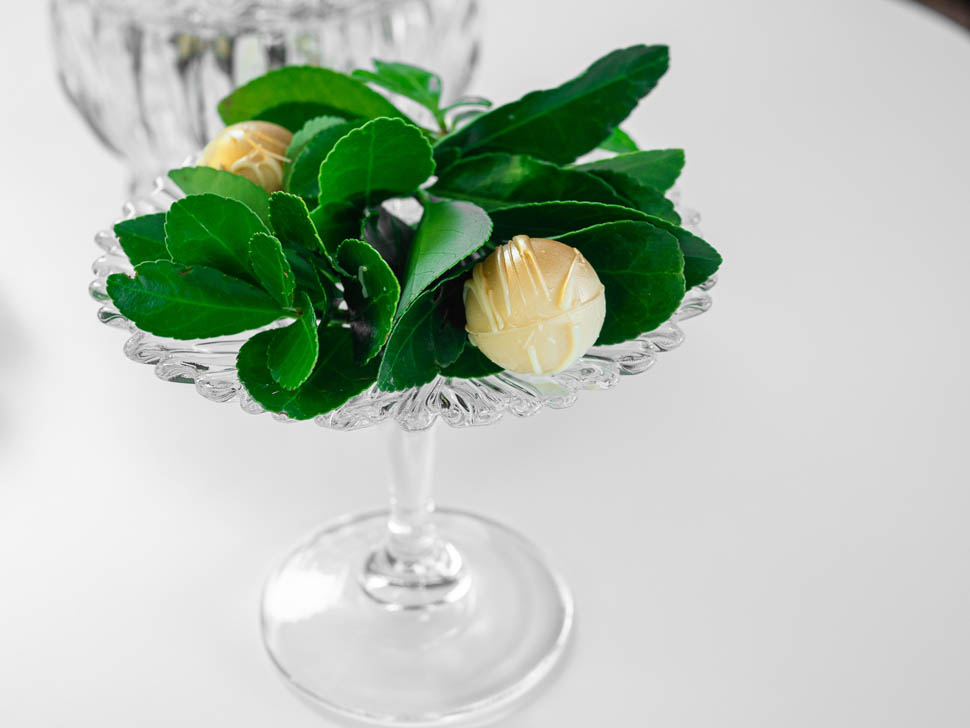
Contacts
Il Piastrino
Via Parco Begni, 47864 Pennabilli RN
P_ 0541 928106
